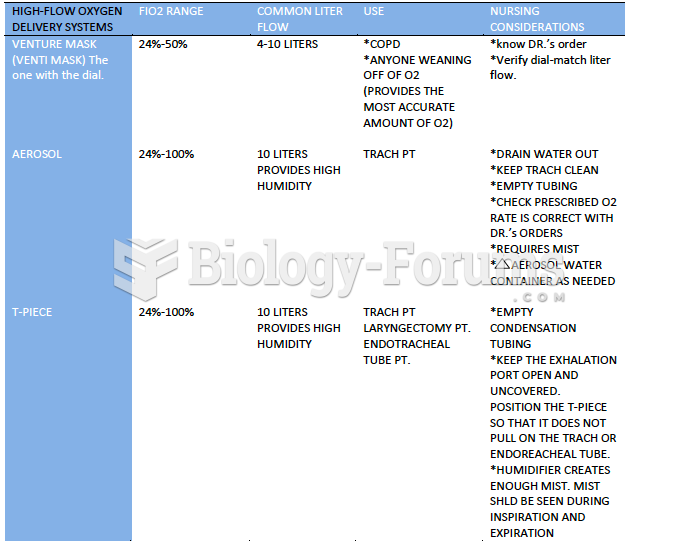|
|
|
Did you know?
Cyanide works by making the human body unable to use oxygen.
Did you know?
According to the National Institute of Environmental Health Sciences, lung disease is the third leading killer in the United States, responsible for one in seven deaths. It is the leading cause of death among infants under the age of one year.
Did you know?
Complications of influenza include: bacterial pneumonia, ear and sinus infections, dehydration, and worsening of chronic conditions such as asthma, congestive heart failure, or diabetes.
Did you know?
There are more nerve cells in one human brain than there are stars in the Milky Way.
Did you know?
There are more bacteria in your mouth than there are people in the world.







